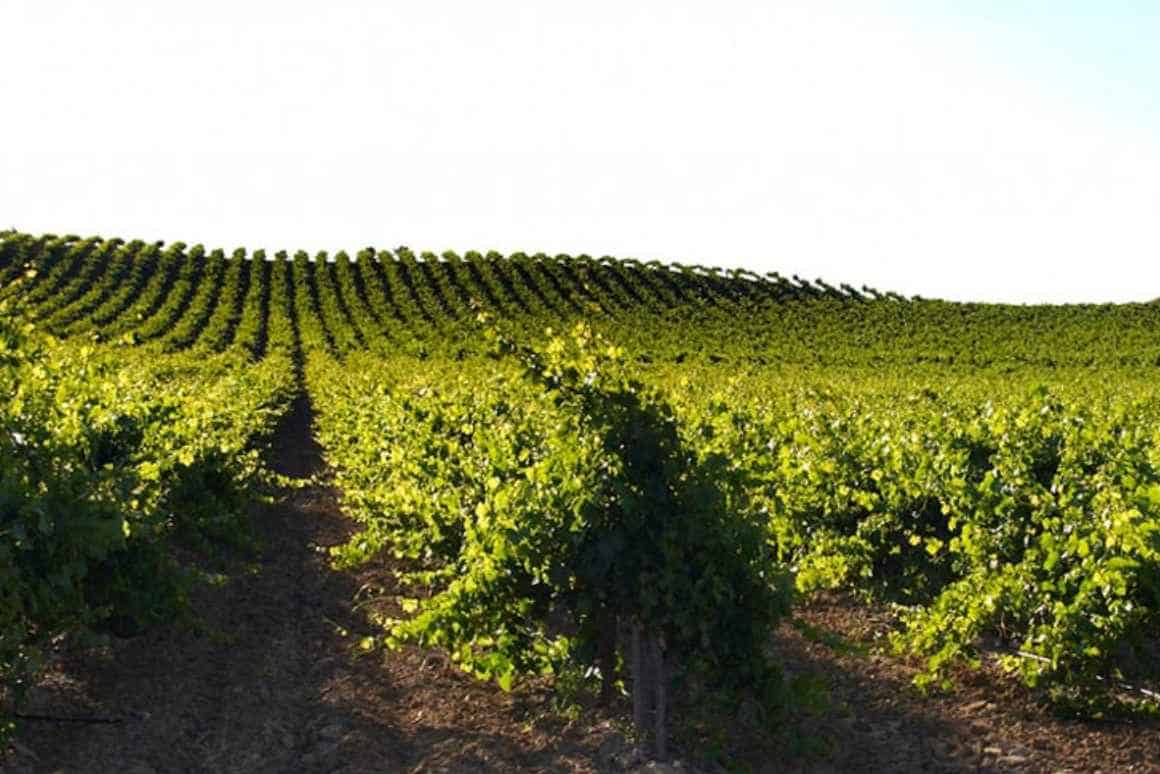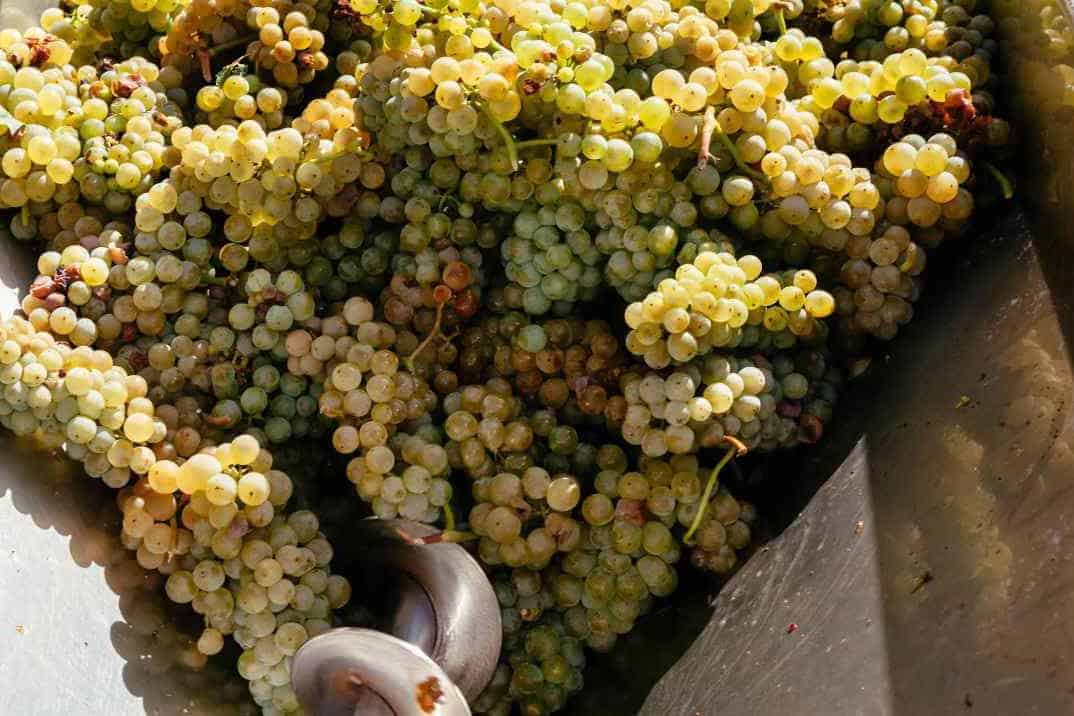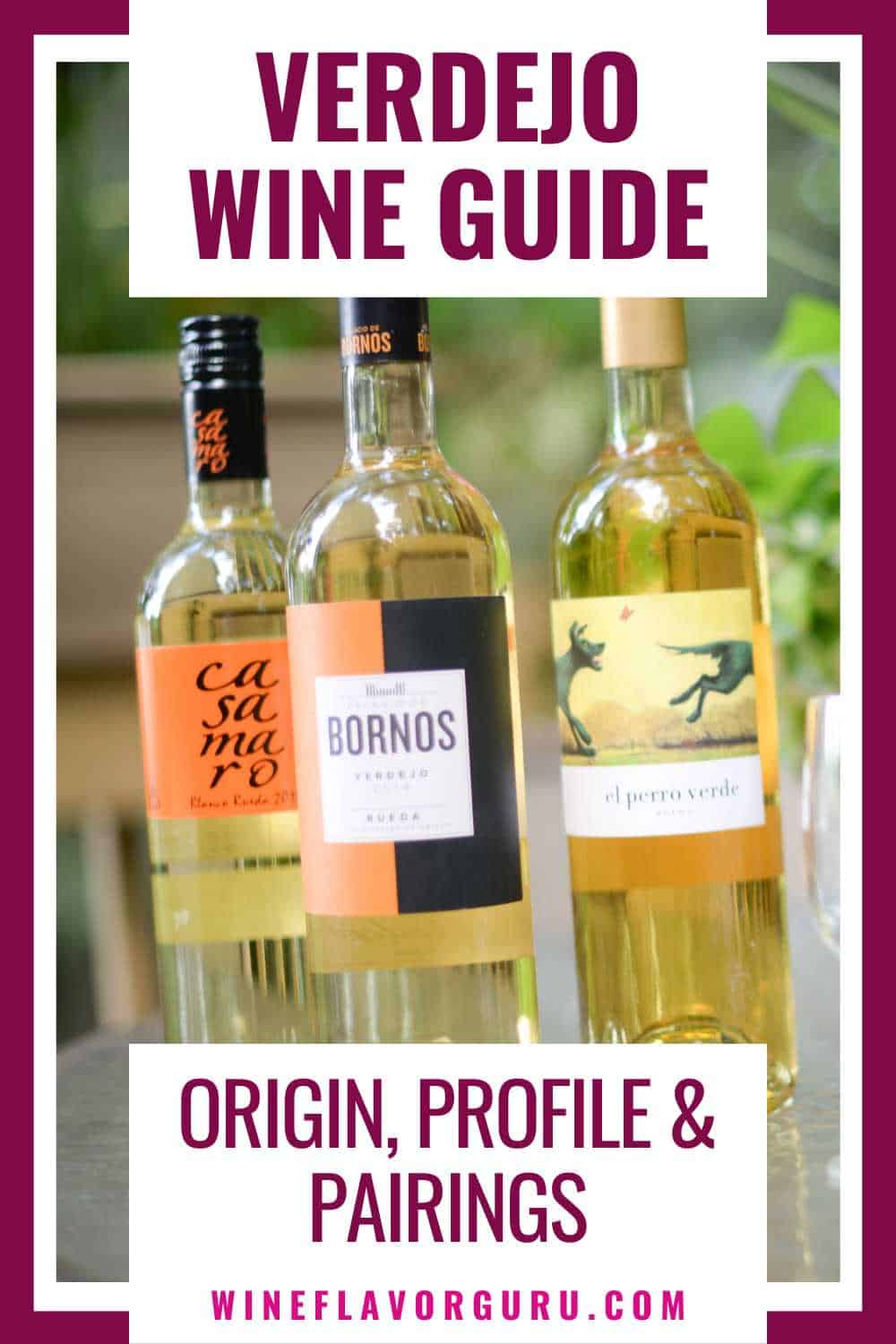Are you a white wine drinker? If you have not tried Verdejo wine, take this as a sign, and put it on your to-try list because it is an excellent introduction to the white wines of Central Spain.
Today, we will share with you Verdejo wine characteristics, preparation methods, and their different styles. Also, do not miss out on the food pairings and Spanish Verdejo wines to try at the end of the blog. It will transform your white wine experience to a whole new level!
What is Verdejo Wine?
Verdejo magnified the small region of Rueda on the worldwide wine map. The vibrant flavor of verdejo grapes gives the high quality of Verdejo wine and catapulted it to the spotlight.
It is a crisp white wine style that has a variety of flavors. Verdejo is dry, light-bodied, with high levels of alcohol. And some of its characteristics are similar to Sauvignon Blanc and Pinot Grigio. Listed below are its other features.
| Origin | Rueda, Spain; from North Africa |
|---|---|
| Appearance | Pale Straw |
| Flavors | Lime, honeydew, green melon, peach, grapefruit, and fennel |
| Sweetness | Low |
| Fruit | Medium-high |
| Body | Light Body |
| Acidity | Medium-high |
| Alcohol | 11.5-13.5% ABV |
| Serving Temperature | 38 to 45 degrees Fahrenheit |
| Shelf Life | 3 to 5 years |
| Food Pairings | Food that has bitter, sour lime, and lemon notes |
The lightness of Verdejo complements a wide array of foods. It is perfect for any occasion because it is refreshing and readily available. If you want to know the specific food recipes to try, then keep on reading.
Origin of Verdejo Wine
Verdejo is a grape variety grown for years in Northwest Central Spain, specifically in Rueda. But let’s be clear about its native origin. Verdejo originally came from North Africa and was brought to Spain during the 11th century to produce wine.
In 1970, Marqués de Riscal saw the potential of Verdejo grapes to make bottles of superb white wine. With the help of Émile Peynaud, they were able to produce a style that was new to the market. Ten years later, Spain has its classification of denominación de origen (DO) on white wines made in the region of Rueda.
From then on, they enacted wine laws to support the production of Verdejo. Wine labeled with the following must contain a specific amount of Verdejo:
- Rueda means it has a minimum of 50% Verdejo.
- Verdejo Rueda means it has a minimum of 85% Verdejo.
From the strongly oxidized, sherry-like wine, the Verdejo we know today is soft, aromatic, and light.
Verdejo Wine Taste
Verdejo has crisp, aromatic, and fruity white wine notes. It gives a balance of sweetness and spiciness when it enters your palate. At the back, it presents a strong citrus flavor — with the lime dominating — and clean acidity.
Verdejo offers complex flavors that improve over time after bottle-aging. From a crisp citrus flavor to a flourishing nutty taste. Here are two Verdejo styles and their characteristics.
Two Unique Styles
As we all know, white wines don’t age as well as red wines because of the absence of tannin. White wines oxidize fast and can spoil the bottle. Color starts to change. The flavors become dull and unpleasant to taste.
But Verdejo is an exception. While most white wines last for 1 to 2 years, Verdejo can last up to 3 to 5 years. Given that the wine has proper storage.
| Verdejo Wine Styles | Young Unoaked | Oak-Aged |
| Fermentation | Fermented in steel tanks and bottled young without oak aging | Fermented in oak |
| Taste | Leaner, fruity taste | Rich, slightly smoky, nutty |
| Bottles | High-Shoulder | Low-Shoulder |
If you prefer a crisp and fresh Verdejo, it is best to consume it immediately. But if you are up for a flavor exploration, try out oak-aged Verdejos. Just like the adage, the best wines are the aged ones.
Making of Verdejo Wine
The rich soil of the Rueda region thrives the Verdejo vines. With long stretching vineyards as far as the eye can see, Spain is considered one of the larger DOs.
Its location has a continental climate where winters are long and cold, and summers are hot and dry. With this changing temperature, vines bury forcibly in the subsoil to search for water. It may seem like an unhealthy environment for a plant, but the heat helps grapes to develop sugar while the cold helps to seal in acidity.
The plump grapes are harvested during lower temperatures at night to lessen the oxidation and color changes in the juice. After harvesting, wineries press the juices out of the grapes and ferment them in steel tanks. The wine is then bottle-aged to produce a fresh and fruity taste. Some Verdejo wines undergo oak aging to develop a new flavor.
What Food Pairs Well With Verdejo?
Learning how to pair wine with foods can result in heavenly-tasting combinations. Verdejo has a high acidity and citrusy flavor. With that in mind, it is best to pair it with food with the same flavor intensity.
In a nutshell, anything that has bitter, sour lime, and lemon notes would work well with Verdejo. Here are specific foods you could try to pair with them.
Light-intensity meat
When pairing food and wine, there are basic food pairings usually followed. Red meat goes with red wine, while white wine pairs well with light-intensity meat like fish or chicken.
One of the many dishes you can pair with a Verdejo is fish tacos. It is an intensely flavorful dish complemented with citrusy taco sauce. The taco sauce consists of lime juice, sour cream, mayo, garlic, and sriracha, it is a balanced flavor of sour and spicy.
Fresh Cheese
Foods at the opposite end of the spectrum offer a pleasant sensation to the palate. Aside from this, it also works as a great palate cleanser. But what goes well with a white wine like Verdejo? The answer is fresh cheese!
Fresh cheese is a name for cheese that is not aged, making it the perfect pair for a crisp Verdejo. It has a mild, salty, tangy flavor that balances with the wine. Feta, Ricotta, and Pecorino are some cheeses that are best to pair with Verdejo.
Shellfish
Most summer foods go well with Verdejo, including shellfish. Shellfish has a light and rich flavor that you want to enjoy slowly. That’s why white wine compliments shellfish better than red wine so as not to overpower its taste.
Clams, mussels, and calamari are perfect to pair with young unoaked Verdejo. Additionally, crab, lobster, and scallops are best for oak-aged Verdejo.
Leafy Greens
Do you prefer drinking your wine with a plate of salad? Comparable to Sauvignon Blanc, Verdejo also goes well with leafy greens like spinach and kale.
Try out a summer salad with tomatoes, avocado, and feta cheese if you like your greens.
Spanish Verdejo Wines To Try
Since the Verdejo wine rose to fame, many styles have developed. And numerous wineries tried to create their version of the great white wine. So to save you the trouble of finding the right wine, we listed three top Spanish Verdejo that will make you love this drink.
1. Bodegas Amanovo 2019 Edición Especial Verdejo
Edición Especial, special edition when translated, is fermented in an oak barrel for ten months
using its yeast. It is 100% Verdejo, giving more concentrated and complex flavors.
It has an intense flavor of ripe peach and apricot, with hints of vanilla and spices. The acidity is very refined to balance out its distinct flavor profile. Edición Especial pairs well with poultry, chicken, and shellfish.
Fun fact! The vines of Verdejo grapes used to make this wine are over 30 years old. There is no wonder why it tastes exceptional.
2. Ossian Vides Y Vinos 2019 Capitel
This bottle is considered the living history of the Segovian Verdejo. A wine that, as they say, transcends time. Capitel 2019 came from the oldest and most singular Verdejo vine in Nieva. A 200-year-old vine that helps bring complexity, concentration, and depth to the wine.
Grapes are hand-harvested and pressed whole. It is fermented with its indigenous yeast and stored in French oak barrels for ten months. This wine reflects the personality of the unique place where it developed. Capitel 2019 goes well with pork, shellfish, and cured meat.
3. Belondrade Y Lurton 2020
Belondrade Y Lurton is the winery’s emblematic wine. Belgrade produces its wine by hand-harvesting organic grapes from its vineyard. The wines are fermented spontaneously and aged in French oak barrels with different characteristics for ten months.
The barrel-aged wine is transferred to bottles and stays for at least five months before being placed in the market. And it lasts for 6 to 8 years before it shows all its characteristics.
It has oak, butter, and vanilla notes. It is light and dry with a bit of acidity. Belondrade Y Lurton also pairs well with pork, shellfish, and cured meat.
Summary
Verdejo is a classic white wine that is crisp, aromatic, and fruity. It is a perfect alternative for Sauvignon Blanc and Pinot Grigio if you enjoy the characteristics of the two. Verdejo also offers a variety of complex flavors depending on the style and fermentation.
From the intricate grape growing and careful hand-picking of the fruit, Verdejo deserves the recognition it has today. Ready your white wine glass and enjoy the refreshing taste of Verdejo!

George Moore, co-founder of Wine Flavor Guru, is a charismatic entrepreneur with a rich background in California’s wine industry. Alongside Sylvia, he transformed a Sonoma County vineyard into a source of premium wines. George’s expertise in sourcing exceptional grapes and his approachable style make wine appreciation both accessible and engaging.







